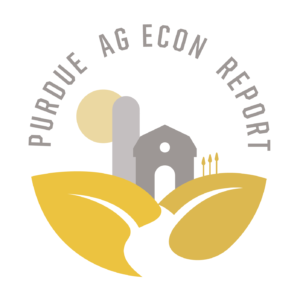Farm Policy
October 23, 2011
PAER-2011-10
Roman Keeney and Amber Remble
The 2008 Farm Bill is scheduled to expire in 2012, meaning that either new legislation must be passed or provisions of the 2008 Farm Bill extended. A hallmark of the 2008 Farm Bill was the option for producers to elect a counter-cyclical revenue program (Average Crop Revenue Election, ACRE) by foregoing 20% of their direct payments. As prices and farm revenues for most crops have been high, ACRE payouts have been relatively small, and few producers selected the program. The concept of a counter-cyclical revenue program was to begin transitioning producers from payments made at a constant level regardless of market and crop prices to one where payments were more in line with the safety net principle of providing higher assistance when revenues were low.
The Republican majority in the House has made deficit reduction a priority. The summer 2011 debt ceiling agreement reached between the White House and Republicans committed the government to approval of a plan for reducing the 10-year projected deficit by at least $1.5 trillion. While eliminating the Farm Bill in total would barely make a dent in that goal, farm state legislators and interest groups that would normally fight to protect agricultural spending levels seem resigned to the fact that cuts are coming. Relatively high farm incomes and the economy in a recession leaves little political room for making the case that agriculture should be exempted from budget reform.
Nearly all public comments made with regard to reduced agricultural spending quickly turn to direct payments. Direct annual payments amount to about $5 billion annually. The idea behind making direct annual payments arose in the mid-1990s, when the United States was reforming farm programs to be World Trade Organization (WTO) compliant. In WTO terms, a constant direct payment is “decoupled” because the farmer cannot make any decision that will change the level of the payment, and thus the payments should not stimulate over-production, which could affect trade. It is this decoupled nature that makes direct payments difficult to justify to taxpayers when agricultural prices and national net farm income may be at record highs.
Given the public comments of legislators and interest group representatives and the strong stance the Obama administration has regularly taken on reducing farm subsidies in budget requests, it seems a certainty that direct payments will be lower in the next Farm Bill. If we use the 2008 Farm Bill as a guide, we see that there is significant legislative support for transferring producers into counter-cyclical revenue support that is offset with lower direct payments. This is in fact the position that many commodity interest groups have arrived at, putting forth public positions that ask for lower direct payments in exchange for better insurance coverage or a revised ACRE program that is simpler to understand and has a more local basis for determining payments. This type of tradeoff could comprise nearly all of agriculture’s expected contribution to deficit reduction. However, these deficit savings would only be relative to “expected” spending. An expanded and mandatory ACRE program would in fact have much larger budget exposure and quickly erase agriculture’s contributions to deficit reduction if prices stumble during the life of the next Farm Bill.
While the direct payments-for-ACRE or insurance tradeoff in farm spending seems to be the leading candidate, other options exist as well, and it seems that nothing is “off the table” for the agriculture committees until they know more from the special committee on deficit reduction (the so- called Super Committee). Farm policy followers should expect to hear discussion and debate in the coming year on adjustments to loan rates and target prices, expanded offerings in crop insurance, farmer savings accounts, and getting the government out of agricultural subsidies altogether. One thing is certain, however, and that is that the more options that arise the more likely the passage of the Farm Bill moves from 2012 to 2013, just as it did in 2001 and 2007.
